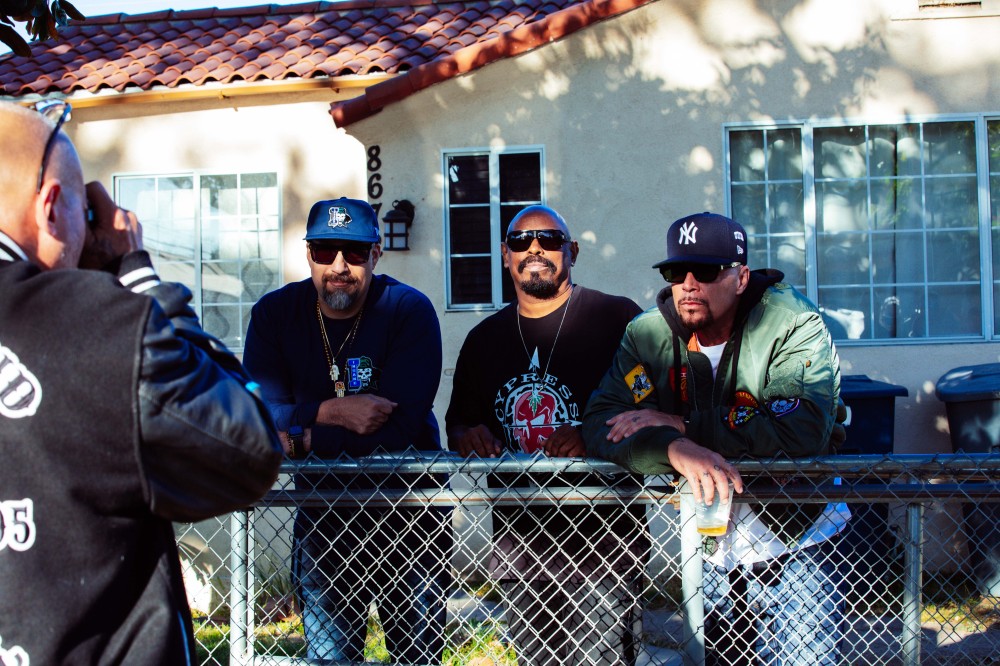
Cypress Hill’s New Documentary Shows How Their Importance Goes Beyond ‘90s Hip-HopLGBTQ Artists Are Leading Brazilian Pop Culture
For a 90-minute run time, Cypress Hill: Insane In The Brain has the daunting task of giving the rap group their due place in music history, and we can’t blame the documentary for trying to make its point. After all, Cypress Hill’s cultural footprint seems to be fading from the general hip-hop and alternative narratives. Unlike their contemporaries NWA, Ice T, or Tupac Shakur, Cypress are not brought up often enough as pivotal figures in the West Coast gangsta rap movement, even though their lyrics, look, and gritty beats were just as important. They were also important crossover figures with the rock crowd, yet they don’t enjoy the critical favor of the Beastie Boys or the nostalgia-fueled love of nu-metal figures like Limp Bizkit. The doc drops facts and testimony to reinforce these claims, but it mostly succeeds when we hear its impressive soundtrack of wall-to-wall bangers — “How I Could Just Kill a Man,” “Hits From The Bong,” “I Wanna Get High,” “(Rock) Superstar”— and their energetic live performances that should be the remembered as the stuff of legends.
The documentary’s visual narrative is perhaps its strongest suit. The fact that it was directed by Estevan Oriol makes it a unique cinematic exercise, as he was the band’s longest-serving photographer as well as tour manager and an integral part of the organization — not to mention his role as documentarist of LA street culture. In short, he was there from day one. Insane In The Brain is illustrated by many of Oriol’s beautiful black-and-white shots, from the streets where the original trio grew up and met to their early recording experiences to their first tours and steps to become one of the most successful bands of the ‘90s. His status as an insider provides Oriol with intimacy and instant rapport with the band, their associates, tourmates, and friends from the past, providing a warm and caring focus to the narrative.
Considering their career, attempting to tell the Cypress Hill story is a difficult challenge, and the documentary succeeds in broad strokes. After hitting the required “before they were famous” beats, there’s no clear timeline to the story, and we dip in and out of certain aspects of what makes Cypress a band worth remembering. Most notably, they spend a chunk of the doc’s time talking about their role in the de-stigmatization and legalization of cannabis. This is an important aspect for sure, yet sacrifices some necessary running time that could go to other equally important points in the band’s history.
The documentary features candid interviews with the four members of the band detailing their upbringing. Sen Dog talks about migrating from Cuba, B-Real recounts his Cuban and Mexican heritage, and Eric Bobo shares stories about his father, the great Puerto Rican percussionist Willie Bobo. And yet, they breeze past how these aspects impact their music. Early on, we hear a talking head say how they are the most successful Latine hip-hop band of all time, and while we see footage of them playing Mexico City and Santiago de Chile — arguably two of Latin America’s biggest hip-hop hubs — the doc gives it as much importance as their visits to Japan and Europe, and their Grandes Éxitos En Español album gets less than five minutes time. A more focused analysis on this would have been appreciated.
As it is, Insane In The Brain is a flawed yet entertaining documentary full of arresting images for fans and newcomers alike. It’s also a portrait of a dysfunctional yet highly likable family of music lifers that changed history and made it look effortless. And that makes it worth a watch.
Cypress Hill: Insane In The Brain premiered on 4/20 on Showtime.



